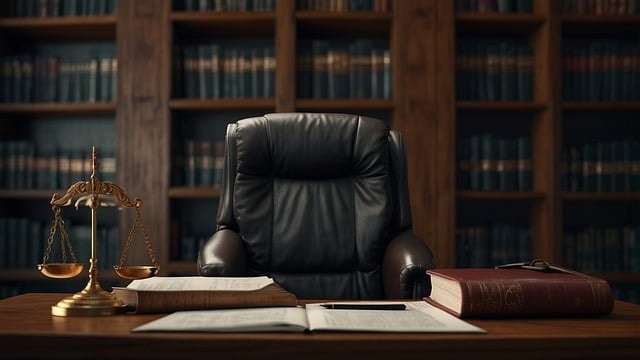Navigating Property Damage Liability in California Commercial Real Estate

Introduction: The Complex World of Commercial Property Damage
Property damage is an ever-present risk in California’s bustling commercial real estate market. Property damage lawsuits often involve claims related to the damage of property, where plaintiffs seek reimbursement for costs associated with repairing or replacing damaged property and additional expenses incurred while the property is unusable. Whether you’re a property owner, tenant, or manager, understanding the intricacies of property damage liability is crucial for protecting your investments and legal rights. This article will guide you through the complexities of property damage liability in California’s commercial real estate landscape.
1. Defining Property Damage in Commercial Real Estate

Property damage in commercial real estate encompasses a wide range of issues that can damage property, including accidents, vandalism, and natural disasters:
- Structural damage to buildings
- Damage to fixtures and fittings
- Destruction of landscaping or outdoor structures
- Harm to utilities and essential systems
Understanding what constitutes property damage is the first step in navigating liability issues.
2. Types of Liability in Commercial Property Damage

In California, property damage liability typically falls into two categories:
- Negligence: When damage occurs due to a failure to exercise reasonable care
- Intentional torts: When damage is caused deliberately. Intentional torts, such as trespassing on land and trespassing on chattels, involve deliberate actions that interfere with someone’s property. Establishing an intentional tort requires proving intent and knowledge on the part of the wrongdoer.
Knowing the type of liability is crucial for determining fault and pursuing compensation.
3. The Role of Insurance in Commercial Property Damage
Insurance plays a pivotal role in mitigating property damage risks:
- Commercial property insurance covers damage to the building and its contents
- Liability insurance protects against claims from third parties
- Business interruption insurance can cover losses from property damage-related downtime
Having comprehensive insurance coverage is essential for commercial property owners in California.
4. California-Specific Laws Governing Commercial Property Damage

California has several laws that affect property damage liability:
- The California Commercial Code governs many aspects of commercial transactions
- The state’s negligence laws follow a comparative fault system
- Specific statutes address issues like earthquakes and wildfires
Familiarity with these laws is crucial for anyone involved in commercial real estate in the state.
5. Landlord vs. Tenant Responsibilities in Property Damage
The lease agreement typically outlines responsibilities for property damage:
- Landlords are generally responsible for structural issues and significant systems
- Tenants usually bear responsibility for damage caused by their operations
Clear lease terms can prevent disputes and costly litigation.
Related Terms: personal property, real property, car accident, motor vehicle accident, property damage claims, property damage claim worth, property damage occurs, damage to property, recover compensation
6. Assessing and Documenting Commercial Property Damage
Proper assessment and documentation are critical:
- Conduct regular property inspections
- Maintain detailed records of the property’s condition
- Use professional assessors for significant damage
Thorough documentation can be invaluable in insurance claims or legal proceedings.
7. The Claims Process for Commercial Property Damage
When damage occurs, a structured claims process typically follows:
- Immediate reporting of the damage
- Documentation and assessment
- Filing a claim with the insurance company
- Negotiation and settlement
Understanding this process can expedite resolution and ensure fair compensation.
8. Dispute Resolution in Commercial Property Damage Cases
When disputes arise, several resolution methods are available:
- Mediation: A neutral third party facilitates negotiation
- Arbitration: An arbitrator makes a binding decision
- Litigation: The dispute is resolved in court
Each method has its pros and cons, and the choice often depends on the specific circumstances.
9. Preventing Property Damage in Commercial Real Estate
Prevention is always better than cure:
- Implement robust maintenance schedules
- Install security systems and fire prevention measures
- Educate tenants on proper use and care of the property
Proactive measures can significantly reduce the risk of property damage.
10. The Impact of Natural Disasters on Property Damage Liability
California’s prone to natural disasters, which can complicate liability issues:
- Earthquakes and wildfires may be considered “acts of God”
- Some damage might be attributable to inadequate preparation
- Special insurance riders may be necessary for comprehensive coverage
Understanding these factors is crucial for property owners in high-risk areas.
11. Time Limitations for Property Damage Claims in California
California law sets specific time limits for property damage claims:
- Generally, there’s a 3-year statute of limitations for property damage
- The clock typically starts when the damage is discovered or should have been discovered
Prompt action is essential to preserve legal rights.
12. The Role of Expert Witnesses in Property Damage Cases
Expert witnesses can be crucial in property damage disputes:
- Structural engineers can testify about building integrity
- Real estate appraisers can provide valuations
- Forensic experts can determine the cause of damage
Their testimony can be pivotal in establishing liability and damages.
13. Recent Trends in California Commercial Property Damage Law
Stay informed about evolving trends:
- Increased focus on environmental liability
- Growing importance of cybersecurity in property management
- Shifting standards for earthquake and wildfire preparedness
Keeping abreast of these trends is vital for risk management.
Conclusion: Protecting Your Commercial Real Estate Interests
Navigating property damage liability in California’s commercial real estate market requires a blend of legal knowledge, risk management skills, and proactive planning. By understanding your rights and responsibilities, maintaining adequate insurance coverage, and staying informed about legal developments, you can protect your investments and minimize potential liabilities.
FAQ: Common Questions About Commercial Property Damage Liability in California
- Q: Who is responsible for damage caused by a tenant’s negligence? A: Typically, the tenant is responsible, but the specific terms of the lease agreement can affect liability.
- Q: How long do I have to file a property damage claim in California? A: Generally, you have 3 years from the date the damage was discovered or should have been discovered.
- Q: Can I be held liable for damage caused by natural disasters? A: It depends on the circumstances. If you failed to take reasonable precautions, you might be held partially liable.
- Q: What should I do immediately after discovering property damage? A: Document the damage, report it to your insurance company, and take steps to prevent further damage.
- Q: How can I protect myself from property damage liability as a commercial landlord? A: Maintain comprehensive insurance coverage, conduct regular property inspections, and ensure clear liability terms in lease agreements.
- Q: How do car accidents lead to property damage liability? A: Car accidents are a common cause of property damage, especially in urban areas like New York City. It’s crucial to have appropriate insurance coverage to handle the legal and repair costs associated with such incidents.
Case Law: Significant Rulings in California Commercial Property Damage
- Vardanyan v. AMCO Insurance Co. (2015): This case emphasized the importance of proper valuation in property damage claims. The court ruled that the insurance company must consider the actual cash value of the property at the time of loss.
- Stephens & Stephens XII, LLC v. Fireman’s Fund Insurance Co. (2014): This ruling clarified that policyholders can recover damages for lost rental income even when a property was vacant at the time of damage, provided they can prove the loss.
- Palsgraf v. Long Island Railroad Co. (1928): While not a California case, this landmark ruling on negligence is often cited in California property damage cases, establishing the concept of foreseeability in determining liability.
These cases underscore the complexity of property damage liability and the importance of thorough documentation and proper insurance coverage in commercial real estate transactions.
Related Terms: other property, natural causes, personal injury, other party, fully compensated, caused damage, time limit, person, example, cost, most cases, defendant, several options, lawsuit, house













